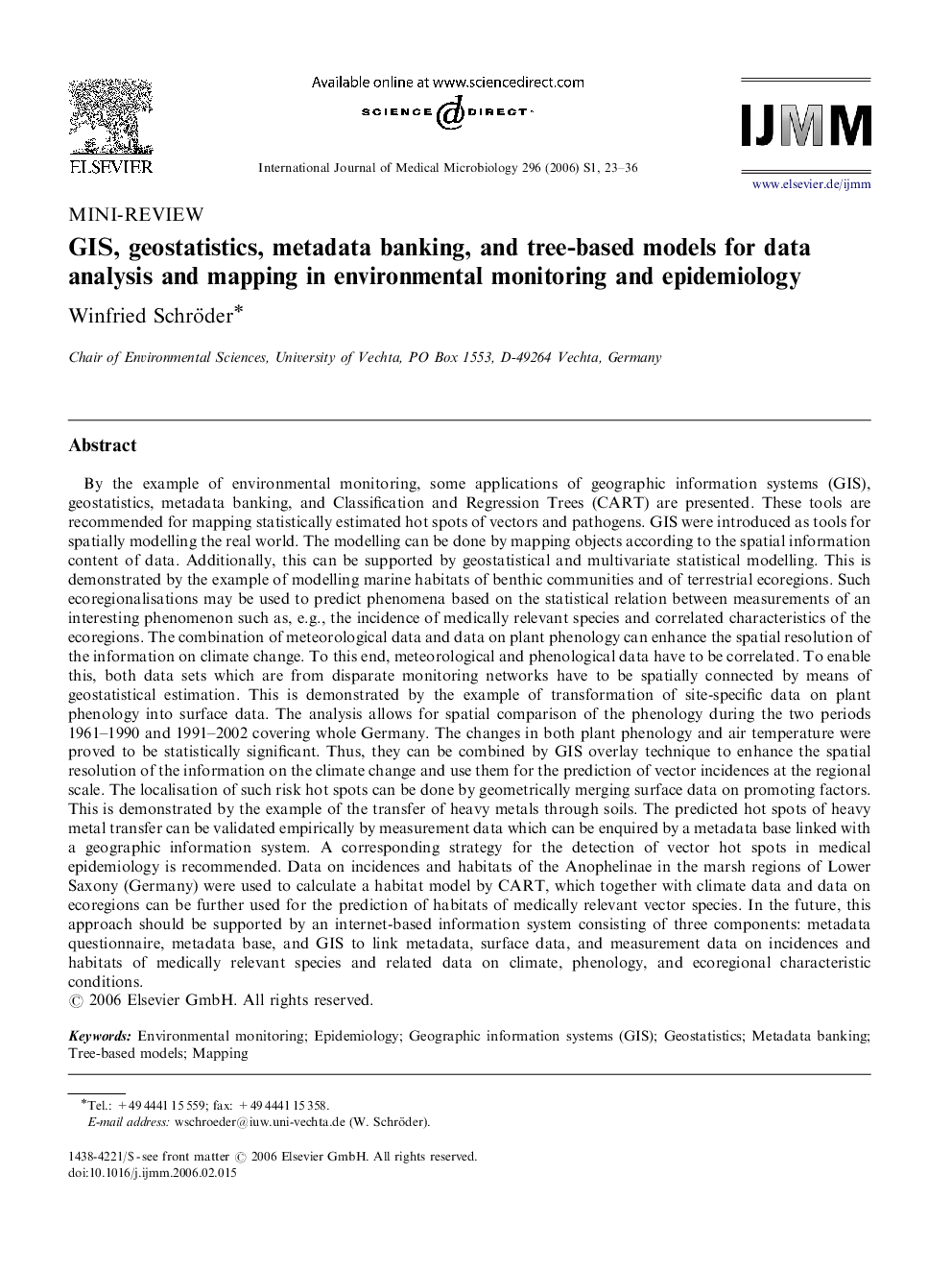| Article ID | Journal | Published Year | Pages | File Type |
|---|---|---|---|---|
| 2055063 | International Journal of Medical Microbiology | 2006 | 14 Pages |
By the example of environmental monitoring, some applications of geographic information systems (GIS), geostatistics, metadata banking, and Classification and Regression Trees (CART) are presented. These tools are recommended for mapping statistically estimated hot spots of vectors and pathogens. GIS were introduced as tools for spatially modelling the real world. The modelling can be done by mapping objects according to the spatial information content of data. Additionally, this can be supported by geostatistical and multivariate statistical modelling. This is demonstrated by the example of modelling marine habitats of benthic communities and of terrestrial ecoregions. Such ecoregionalisations may be used to predict phenomena based on the statistical relation between measurements of an interesting phenomenon such as, e.g., the incidence of medically relevant species and correlated characteristics of the ecoregions. The combination of meteorological data and data on plant phenology can enhance the spatial resolution of the information on climate change. To this end, meteorological and phenological data have to be correlated. To enable this, both data sets which are from disparate monitoring networks have to be spatially connected by means of geostatistical estimation. This is demonstrated by the example of transformation of site-specific data on plant phenology into surface data. The analysis allows for spatial comparison of the phenology during the two periods 1961–1990 and 1991–2002 covering whole Germany. The changes in both plant phenology and air temperature were proved to be statistically significant. Thus, they can be combined by GIS overlay technique to enhance the spatial resolution of the information on the climate change and use them for the prediction of vector incidences at the regional scale. The localisation of such risk hot spots can be done by geometrically merging surface data on promoting factors. This is demonstrated by the example of the transfer of heavy metals through soils. The predicted hot spots of heavy metal transfer can be validated empirically by measurement data which can be enquired by a metadata base linked with a geographic information system. A corresponding strategy for the detection of vector hot spots in medical epidemiology is recommended. Data on incidences and habitats of the Anophelinae in the marsh regions of Lower Saxony (Germany) were used to calculate a habitat model by CART, which together with climate data and data on ecoregions can be further used for the prediction of habitats of medically relevant vector species. In the future, this approach should be supported by an internet-based information system consisting of three components: metadata questionnaire, metadata base, and GIS to link metadata, surface data, and measurement data on incidences and habitats of medically relevant species and related data on climate, phenology, and ecoregional characteristic conditions.
